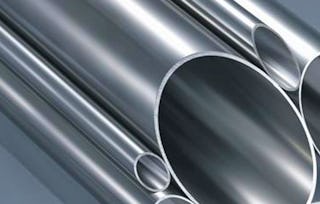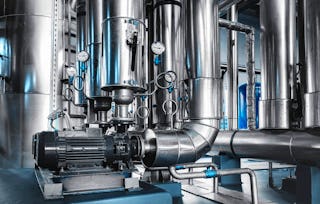This course entitled “ASME B31 Series and Pipeline Construction” under the specialization entitled “Design of Industrial Piping Systems” is aimed to cover power, process, and transportation ASME B31 code sections and activities involved in standard cross-country pipeline construction. First, the evolution of the ASME B31 Pressure Piping series is covered as it is important to know and all the code sections under ASME B31 Pressure Piping are mentioned in this course. The layouts of the code sections namely ASME B31.1, ASME B31.3, and ASME B31.4 are elaborated to address the design procedure of power, process, and liquid transportation piping systems to comply with the requirements mentioned in these code sections. The learners get familiarized with the chapters and their paragraphs, mandatory and non-mandatory appendices of these three code sections.

Gain next-level skills with Coursera Plus for $199 (regularly $399). Save now.

ASME B31 Series and Pipeline Construction
This course is part of Design of Industrial Piping Systems Specialization

Instructor: Subject Matter Expert
3,380 already enrolled
Included with
(36 reviews)
Recommended experience
Skills you'll gain
Details to know

Add to your LinkedIn profile
2 assignments
See how employees at top companies are mastering in-demand skills

Build your subject-matter expertise
- Learn new concepts from industry experts
- Gain a foundational understanding of a subject or tool
- Develop job-relevant skills with hands-on projects
- Earn a shareable career certificate

There are 2 modules in this course
This module deals with the ASME B31 Pressure piping series code sections such as ASME B31.1, ASME B31.3, and ASME B31.4. At the beginning, the evolution of the ASME B31 Pressure Piping series is briefed in this module and all the code sections included in ASME B31 Pressure Piping are mentioned. The layouts of the three important code sections are considered in this module to address the design procedure of power, process, and liquid transportation piping to meet the requirements mentioned in these code sections. These code sections are ASME B31.1, ASME B31.3, and ASME B31.4. ASME B31.1 – Power Piping Code section consists of seven chapters, ten mandatory appendices, and five non-mandatory appendices. The contents related to requirements presented in seven chapters of the ASME B31.1 code section are covered in such a way that the learner can become familiarised with all the paragraphs of the Power Piping Code section and ensure the piping design complies with the ASME B31.1 code section. ASME B31.3 – Process Piping Code section consists of ten chapters and twenty mandatory appendices. All appendices are mandatory and no non-mandatory appendix. The contents presented in ten chapters of the ASME B31.3 code section are covered lucidly. Process piping systems are subjected to different kinds of services such as toxic, non-toxic, flammable, non-flammable, elevated temperature, high pressure, high purity, and normal. Therefore, the contents of this code section based on requirements are systematically covered so that learners cannot face difficulty while designing the piping system and comply with the ASME B31.3 code section. ASME B31.4 code section covers pipeline transportation systems for liquids. This particular code section consists of nine chapters and two appendices. ASME B31.4 additionally covered corrosion control. It also covers the requirements for offshore pipelines. This particular code section is briefed in this module so that the learner can also become familiar with the important paragraphs and the concerned requirements for designing the pipeline to comply with this code section.
What's included
17 videos1 reading1 assignment
Cross-country pipelines are mostly underground and hence they are invisible. This is the reason why they don’t get their due recognition from the general public regarding the amount of contribution that is being made by the pipelines in terms of economic growth and security of any nation. These are the lifelines of the nations. Therefore, to start with, the advantages of cross-country pipelines over conventional transportation such as by road, rail, or shipping, are covered to bring awareness about the importance of these pipelines among the learners. Next, the activities involved in standard pipeline construction starting with ‘Right of Use’ or ‘Right of Way’ are covered. There is a sequence of activities involved in cross-country pipeline construction. Right of Way, Clearing, Grading, Stringing, Trenching, Lowering, Backfilling, Tie-in, Welding, Bending, Non-destructive testing, Field joint coating, Cathodic protection, Special installation on pipelines like Markers, and Cleanup are the activities discussed in detail in this specific module. The equipment and crew that are needed to perform these activities are specified so that learners can realize the type and gravity of each activity, and the quantum of work involved in each activity. Corrosion of pipelines is one of the threats posed by underground cross-country pipelines. Cathodic protection is an effective method of protecting buried pipes and ensuring pipeline integrity. The technique, design considerations, and major components of the cathodic protection system are covered. Open-cut method and its limitation while routing the pipelines across the obstacles and within urban areas are discussed. Types of Horizontal Earth Borings and how a tunnel is formed underneath the obstacle using the Horizontal Directional Drilling technique are covered. Key features, functions, and advantages of the thrust boring are explained. How the thrust boring is different from Micro-tunneling is also covered. Finally, several strategies to repair the leaks in the pipeline, what is hot tapping and its importance, and the hot tapping construction are meticulously covered in this specific module.
What's included
14 videos1 assignment
Earn a career certificate
Add this credential to your LinkedIn profile, resume, or CV. Share it on social media and in your performance review.
Instructor

Offered by
Explore more from Mechanical Engineering
 Status: Free Trial
Status: Free TrialL&T EduTech
 Status: Free Trial
Status: Free TrialL&T EduTech
 Status: Free Trial
Status: Free TrialL&T EduTech
 Status: Free Trial
Status: Free Trial
Why people choose Coursera for their career




Learner reviews
36 reviews
- 5 stars
77.77%
- 4 stars
5.55%
- 3 stars
0%
- 2 stars
8.33%
- 1 star
8.33%
Showing 3 of 36
Reviewed on Oct 23, 2024
such a wonderful platform to the students who had a grace on studies
Frequently asked questions
To access the course materials, assignments and to earn a Certificate, you will need to purchase the Certificate experience when you enroll in a course. You can try a Free Trial instead, or apply for Financial Aid. The course may offer 'Full Course, No Certificate' instead. This option lets you see all course materials, submit required assessments, and get a final grade. This also means that you will not be able to purchase a Certificate experience.
When you enroll in the course, you get access to all of the courses in the Specialization, and you earn a certificate when you complete the work. Your electronic Certificate will be added to your Accomplishments page - from there, you can print your Certificate or add it to your LinkedIn profile.
Yes. In select learning programs, you can apply for financial aid or a scholarship if you can’t afford the enrollment fee. If fin aid or scholarship is available for your learning program selection, you’ll find a link to apply on the description page.
More questions
Financial aid available,





